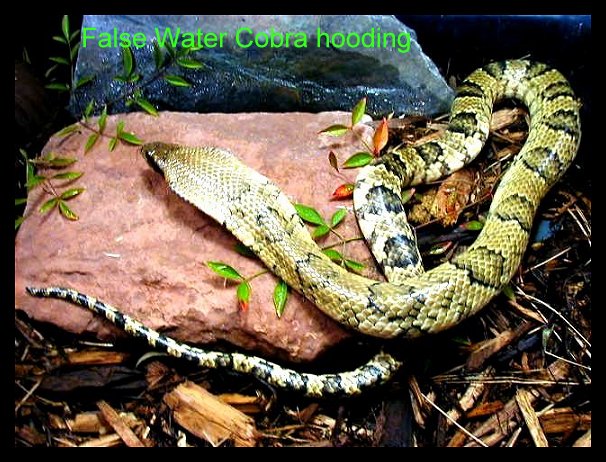August 30, 2008
False Cobra
False cobra (Malpolon moilensis)
Although it is in fact mildly toxic, generally the false cobra is harmless to man.
The false cobra is rather like a sand snake, however it is thicker bodies and can overcome somewhat larger prey than the sand snake.

False Cobra
The false cobra, when cornered will spread its neck out very much like a cobra, and will hiss.The false cobra lives in much the same habitat and will eat the same prey as the sand snake, but can take on larger animals, however as the name tells us, the false cobra is in no way related to the more deadly cobra snake.The false cobra is pale brown to cream colored with carker spots along the back and sides of the body.
It has some very unique red eyes that have round, black pupils as opposed to the slit type.
The false cobra can grow to about 3 feet long.
It is widely found in Arabia.
It isn’t often kept as a pet or in zoos due to its aggressive nature.
In addition to the loud hissing and the spreading of the skin around the head, the false cobra will also throw itself against the walls of a cage or enclosure violently and wil attempt to strike at humans when feeding it.
Although it is not deadly, the venom is very like a wasp sting and may last for several hours.
The false cobra is a burrowing snake, and has been found on a regular basis sharing the burrows of other animals such as the spiny tailed lizard.
burrows of spiny-tailed lizards.
Although it is mildly toxic, it rarely bites and is seen as a helpmate to men because of its control of rats and other rodents in the area of its range.
One Comment



i want picture of cobra snake